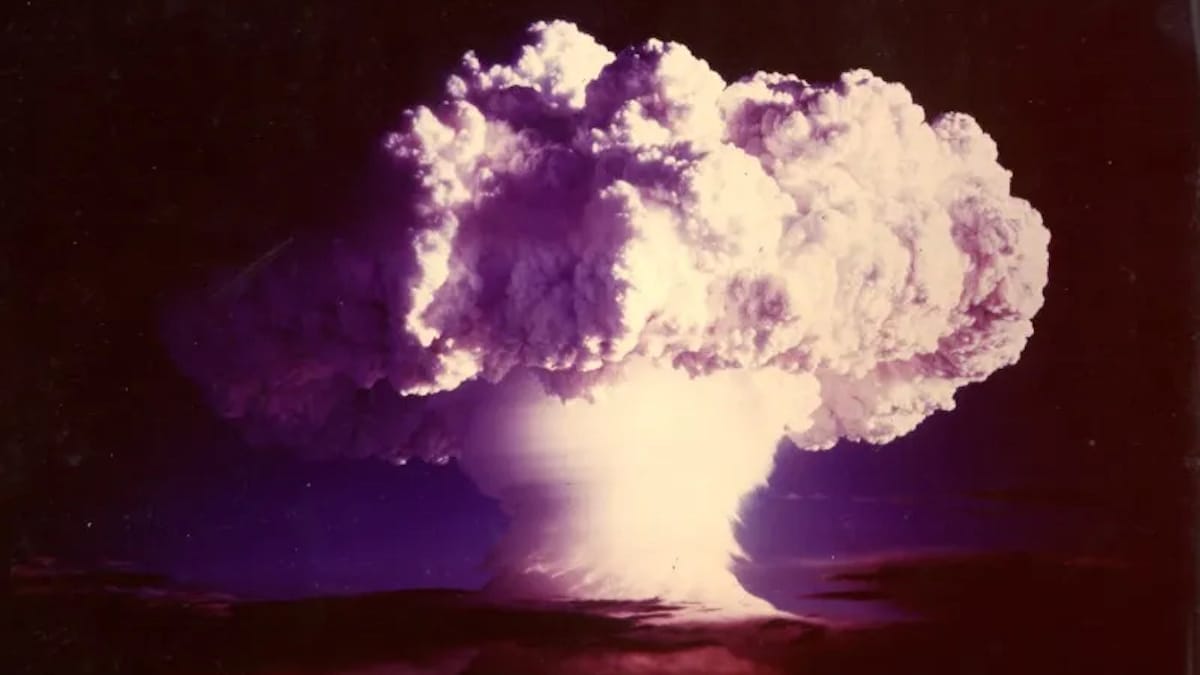
Against doomism
Reading Time: 4 minutes Doom-laden scenarios get the most attention, but slow, bumpy progress toward a better world has always been more likely.
[Previous: Climbing the Kardashev ladder: How civilization survives]
Doom gets the best headlines.
Just picture it: Climate change will make the world a charred hellscape. Nations will crumble like sandcastles, cities will burn, and our children will be press-ganged into biker militias fighting the water wars.
Or: COVID will end civilization even before that. The virus will keep mutating, growing more contagious and more lethal, until it wipes us all out. The handful of survivors will wander through abandoned cities, battling zombified hordes.
Or: Christofascism will conquer the West. Our precious ideals of democracy will be crushed, and hooded inquisitors will roam the land. Women will be enslaved for breeding stock, atheists will be burned at the stake in the town square, and even whispering the name “Charles Darwin” will be punishable by death.
These all make for vivid stories. You’ve probably watched movies or TV shows that depict these exact scenarios. And that’s precisely why we have to be careful when trying to judge how big a danger these things are. It’s called the fallacy of misleading vividness: an outcome that’s easier to picture seems more likely to us.
On top of that, the brain is more captivated by threatening scenarios than by rosy ones. Evolution gave us a built-in bias toward negative news. That may have been a valuable survival trait in a world where danger lurked on every side and we had to be prepared, but now it makes us easy prey for every dubious doomsayer on the internet. It’s a tendency that right-wing propaganda exploits to the fullest by parading a stream of imaginary boogeymen before their audience, keeping them at a perpetual simmer of fear and rage, where they’re most malleable.
These are the reasons why dystopian scenarios seem compelling to us. But that doesn’t give us insight into how likely they really are.
I try to bear in mind the mediocrity principle, the assumption that there’s nothing special or unique about our vantage point on the universe. This isn’t a law that can be proven, but a principle of scientific reasoning that we employ because it holds up more often than not, like Occam’s razor.
To suggest that we—you and I, the person who wrote these words and the person reading them right now—are living in The Last Good Times, that we just happen to be here to witness the end of humanity, would violate the mediocrity principle in a big way. It would mean that we do live at a special time, at a moment in history that’s unlike all other moments.
There was never a time when humanity faced no existential threats. We’ve always survived and thrived in spite of difficulties, not because of their absence.
That doesn’t mean it can’t be true. But believing it is never the smart bet. Humanity has faced countless crises before now, and we’ve survived. There have been many local catastrophes and tragedies—natural disasters, wars, droughts, the collapse of countries and the crumbling of political orders—but as a species, we endured.
We survived a genetic bottleneck around 70,000 years ago, possibly caused by a supervolcano eruption, that reduced the entire human race to as few as 2,000 individuals.
We survived ages of war and conquest, when violence was an everyday reality, cruelty was the universal policy of empires, and slavery and colonialism went unquestioned by right-thinking people.
We survived dark ages where libraries burned, books decayed, centuries of hard-won scholarship were lost, and civilization sank back into ignorance.
We survived devastating plagues like the Black Death, smallpox, the 1918 flu pandemic, and others more lethal than the one we’re currently facing, when our knowledge of medical science was rudimentary and we had far fewer tools to deal with them.
We survived the Cold War, when the world teetered on the verge of nuclear annihilation, almost but not quite achieving it more than once.
In fact, there was never a time when humanity did not face existential threats. There was never a time when we could say civilization was stable and its continuance assured. We’ve always survived and thrived in spite of difficulties, not because of their absence.
Are the dangers we face today bigger, more critical, more pressing than anything our ancestors dealt with? Perhaps. But by the same token, our ability to respond is much greater.
We have technology our forebears could scarcely have conceived of. We have access to more abundant and cheaper energy. We have a more intelligent and better-educated populace, which makes us better able to come up with solutions (90% of all the scientists who’ve ever lived are alive right now). We live in a more democratic world, more interlinked by diplomacy and trade, which weighs in favor of peaceful solutions and makes war more reviled and more costly to the aggressor.
Will we have to migrate, to adapt, to overhaul the old ways? Absolutely. It will be difficult, costly and controversial, but that doesn’t mean it won’t happen. If past experience is a guide, humanity will do what is needed—even if only when there’s no alternative.
Here’s a less dramatic, less emotionally salient, but more probable trajectory than those doom-laden scenarios I described: Humanity will keep muddling through. People will continue to die in pointless, preventable tragedies; the poor will continue to get the short end of the stick; democracies will continue to be mired in gridlock and scandal; the media will continue to misinform and fearmonger. And in the meantime, people will get a little smarter; technology will get a little better; and the world will get a little more prosperous. That slow, incremental improvement, that inch-by-inch grasping for a better world, is the way progress almost always happens.
